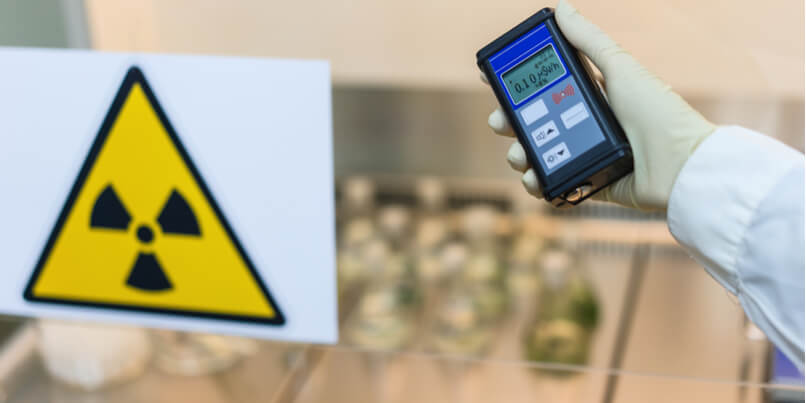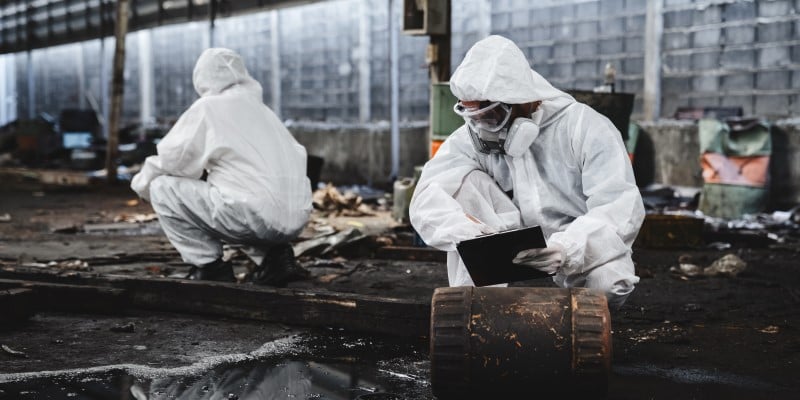 Any exposure to ionizing radiation brings with it a degree of risk.
Any exposure to ionizing radiation brings with it a degree of risk.
So for those tasked with emergency response, it’s crucial that they are able to handle the unique challenges of radiation incidents with confidence, a mindfulness of their personal safety and a thorough working knowledge of their detector equipment.
The nature of radiation makes exposure to live sources unviable for many training purposes, so the next best alternative is the use of safe and environmentally friendly simulated radiation training systems that enable authentic simulated Beta/Gamma search and survey, radionuclide identification, contamination monitoring and dose-rate assessment.
As we’ve discussed in previous blog posts, the introduction of realism into any form of hazmat or CBRNe training can have a crucial role to play in effective learning outcomes.
In this post we provide an overview of 4 essential features of simulator radiation detectors that hazmat safety instructors may want to bear in mind as they explore their options and advise on purchasing decisions.
1) Authenticity
At face value, radiation detector equipment is fairly simple to use, however what can prove more problematic for trainees is building an understanding of how the values displayed on their instruments relate to each other. It's also important to consider the effect that factors such as distance, time and shielding can have on their readings.
While classroom learning and “make-believe” set-ups can provide some value in instructing trainees on the use of their detectors, by far the most effective training method is through the handling of actual or replica detector equipment in as life-like a scenario as possible.
The vast majority of hazmat training exercises can allow measured exposure to the risk, however it’s simply not the case when dealing with radiation, which makes the introduction of electronic simulator equipment into radiation training exercises so invaluable.
2) Ease of Setup
Practice and repetition are essential for effective learning, so the ease with which a radiation safety training scenario can be set up is a key consideration.
The scenarios should also perform consistently, whether as an individual or group exercise; they should offer the opportunity to review trainee performance and they should be quick and easy to reset.
Ideally too, the instrumentation used should require little or no preventative maintenance, which will lead to considerable savings both in terms of time and expense.
3) Life-time Cost
Simulation software is complex and takes many years to develop in order to achieve a realistic representation of an actual device. The reality is too that the demand for simulator detectors is much lower than that for actual equipment, which has a direct bearing on the unit cost of production.
But while the purchase of simulation equipment represents additional investment, it’s also important to factor in the “whole of life” use of the instrumentation.
With electronic simulators, for example, there is no need for a live source, which removes the requirement to adhere to strict regulatory controls.
The cost of repairing damaged or contaminated simulators is also significantly less when compared with real detectors. The use of simulators also avoids the inconvenience of having to take actual detectors out of service for repairs or calibration.
4) Improved learning outcomes
Finally too, it’s important to see evidence of the successful implementation of electronic simulator detectors for actual crews in real-life training scenarios.
For the UK’s Mid and West Wales Fire Service, for example, the use simulator radiation detectors has resulted in significant improvements in learning outcomes, as Dai Swann, Head of Response for Pembrokeshire, explains:
"The crews become totally immersed in the ‘reality’ of the exercise from the moment the equipment is turned on.
“Crews are now able to simulate a whole range of scenarios with live data being displayed on their instrumentation (and) the results are spectacular.
"We have observed more effective monitoring techniques, better retention of information, and familiarity with radiation incident procedures – with crews trained this way over previous methods with considerably less ‘skill fade’ over time."
The decision to purchase simulator radiation detector equipment for hazmat or CBRNe training exercises is not one to be taken lightly. However the benefits to be gained, in terms of authenticity, the efficiency of training, enhanced learning outcomes and cost-effectiveness over time, can be significant.







